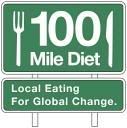Food Safety Corner: Safe Temperatures
Food Safety Basics
No one wants to get sick from food. It gives us life and nourishes our body. What a disaster when food actually is the cause of illness. The best way to avoid this is to practice safe food handling and processing practices at all times. While the food is being prepared, this is primarily the responsibility of your Personal Chef (preferably a USPCA Personal Chef, all of whom are well educated in food safety).
Once the food is cooked, properly cooled, and stored, it's up to the client to follow the chef's instructions to keep that food safe.
What is the Temperature Danger Zone?
The TDZ, or Temperature Danger Zone, is the range of temperatures within which dangerous microorganisms can grow to harmful levels and potentially make someone ill. Most foodborne microorganisms grow well between the temperatures of 41° F and 135° F (5° C and 57° C). This means that while food is in this zone (room temperature), critters can double every 20 minutes. So if food stays in this zone for more than 2 hours, you risk being exposed to dangerous levels of microorganisms. For this reason, you should never leave food out for long, and never defrost food on the counter top.
The following is something I give to clients on the first visit, and I get them to initial that they unnderstand and agree to follow these guidelines for their own safety.
Thawing Meals
Thaw frozen meals in the refrigerator 24 to 48* hours prior to reheating. This sometimes requires planning ahead, and in the event you are taking meals directly from the freezer, thawing in the microwave is appropriate. Meals are never to be thawed out on the counter, as this will promote bacteria growth.
*Casseroles sometimes take longer to thaw, so a two-day thaw in the refrigerator is recommended. Thawed meals should stay fresh in the refrigerator for three days. Fresh fish is recommended to be eaten within 2 days if left fresh in the refrigerator. Frozen fish entrees will also stay two days in the refrigerator after thawing overnight.
Refreezing Foods
Do not refreeze unused portions of previously frozen, reheated meals. Use the unused portion within 1 to 2 days in the leftover state. This rule also applies to raw meats and other foods that have been thawed for cooking.
Reheating Foods
Foods should be heated until bubbly throughout or to an internal temperature of 145° to 165° Fahrenheit. Soups, gravies and stews should be heated to a simmer for 1 to 2 minutes
Cooking Meats Properly
Poultry should be cooked to an internal temperature of 165° F, hamburger 155° F and pork 150° F. Rare roast beef is the exception of 130° F.
Expecting the Unexpected
If something can go wrong, it will, they say. If you experience a power outage, leave freezer door shut. Food can remain safe for use for up to 48 hours if the door is not repeatedly opened.











2 Comments:
The popular HACCP Standard! Informative blog! Thanks.
Hygiene analysis critical control point, am i right?
Yes, indeed, give the lady a prize! I don't work in restaurants, so the detailed documentation of a HACCP program is not part of my daily work, but the principles are the same in any kitchen work environment. Even in my clients homes, I try to assess their food saftely risks, and find ways to improve storage and handling to reduce the possibility of food-borne illness.
Post a Comment
<< Home